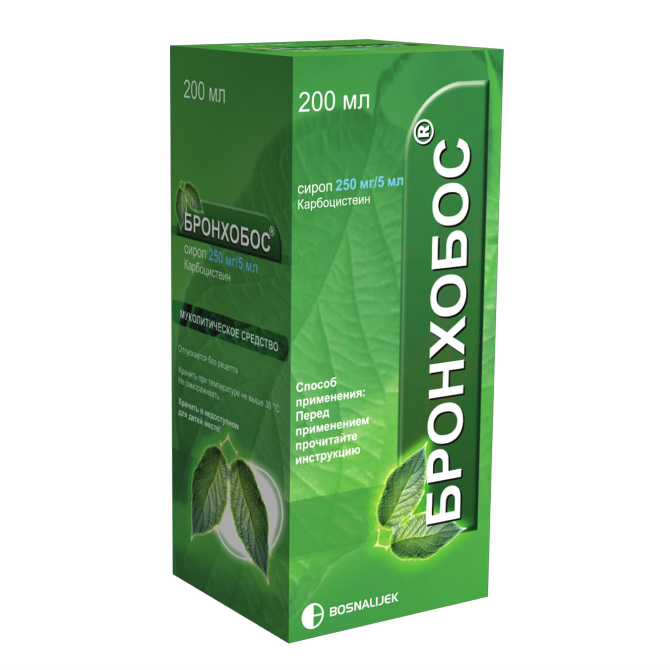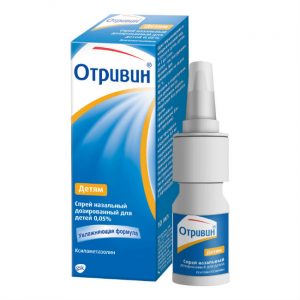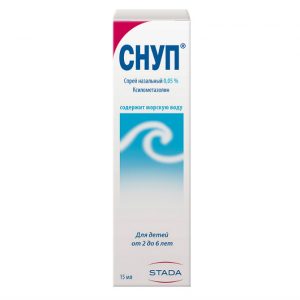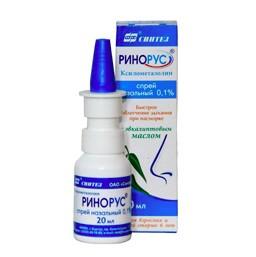Description
Latin name
Bronchobos
Packing
Bottle 200 ml.
Pharmacological action
Bronchobos is a mucolytic (expectorant) drug.
Pharmacodynamics
Mucolytic and expectorant effect due to the activation of sialic transferase – an enzyme of goblet cells of the bronchial mucosa. It normalizes the quantitative ratio of acidic and neutral sialomucins of bronchial secretion, restores the viscosity and elasticity of mucus.
Promotes the regeneration of the mucous membrane, normalizes its structure, activates the activity of the ciliary epithelium. Restores the secretion of immunologically active IgA (specific protection) and the number of sulfhydryl groups of mucus components (non-specific protection), improves mucociliary clearance.
Pharmacokinetics
Absorption is fast and nearly complete. Bioavailability is low (less than 10% of the dose taken). Tmax in the blood and in the mucous membrane is 1.5 2 hours, the therapeutic concentration remains in the blood for 8 hours. It is retained for the longest time in the blood, liver and middle ear. In high concentration, it accumulates in bronchial secretion (17.5% of the dose taken). It is metabolized in the liver (it has the effect of “first passage” through the liver).
Excreted by the kidneys (60 90% unchanged, the rest – in the form of metabolites). T1 / 2 – 2 3.15 hours. Complete excretion occurs after 3 days.
Indications
acute and chronic bronchopulmonary diseases accompanied by impaired formation and excretion of mucus (tracheitis, bronchitis, tracheobronchitis, bronchial asthma, bronchiectasis)
inflammatory diseases of the middle ear and paranasal sinuses (rhinitis, rhinitis, bronchoscopy or bronchography.
Contraindications
hypersensitivity to the drug or its auxiliary components
peptic ulcer of the stomach and duodenum in the acute stage
chronic glomerulonephritis (in the acute phase)
cystitis srdlp disease liver disease srdlpdp brain disease
pregnancy
lactation.
Precautions: gastric ulcer and duodenal ulcer (history).
Pregnancy and lactation
Pregnancy and lactation are contraindicated.
Composition of
5 ml of syrup contains:
active ingredient: iron (in the form of iron (III) hydroxide polymaltose) 50 mg of
excipients: sucrose, sorbitol, methyl parahydroxybenzoate, ethanol, water, water, ethanol 38 ml of syrup contains:
Active ingredient:
carbocysteine 250 mg
Excipients:
glycerol 135 mg
ethanol 96% 125 mg
sodium hydroxide 61 mg
carmellose sodium 20 mg
citric acid monohydrate 10 mg
methyl parahydroxybenzoate 9 mg
sodium saccharin 5 mg
propyl acid (E122) 0.05 mg
purified water – up to 5 ml.
Dosage and Administration
Inside.
Syrup. For the dosage of syrup, a 5 ml volumetric spoon, graduated by 2.5 ml, is used. 1 scoop of syrup 5% (5 ml) = 250 mg carbocysteine 1 scoop of syrup 2, 5% (5 ml) = 125 mg carbocysteine.
Adults – 15 ml (3 scoops) 5% syrup 3 times a day.
For children aged 3 6 years, 5 ml each (1 scoop) 2.5% syrup 2 4 times a day. Children over 6 years old – 5-10 ml (1-2 scoops) 2.5% syrup 3 times a day.
Side effects of
From the gastrointestinal tract: nausea, vomiting, diarrhea and epigastric pain, gastrointestinal bleeding are sometimes noted.
Hypersensitivity reaction: isolated cases of allergic reactions (skin itching, urticaria, exanthema, angioedema) have been reported.
Other: dizziness, weakness, malaise.
Overdose
Symptoms: stomach pain, nausea, diarrhea.
Treatment: symptomatic.
Storage conditions
At a temperature of 15 to 30 ° C.
Expiration
3 years.
Dosage form
dosage form
oral solution




